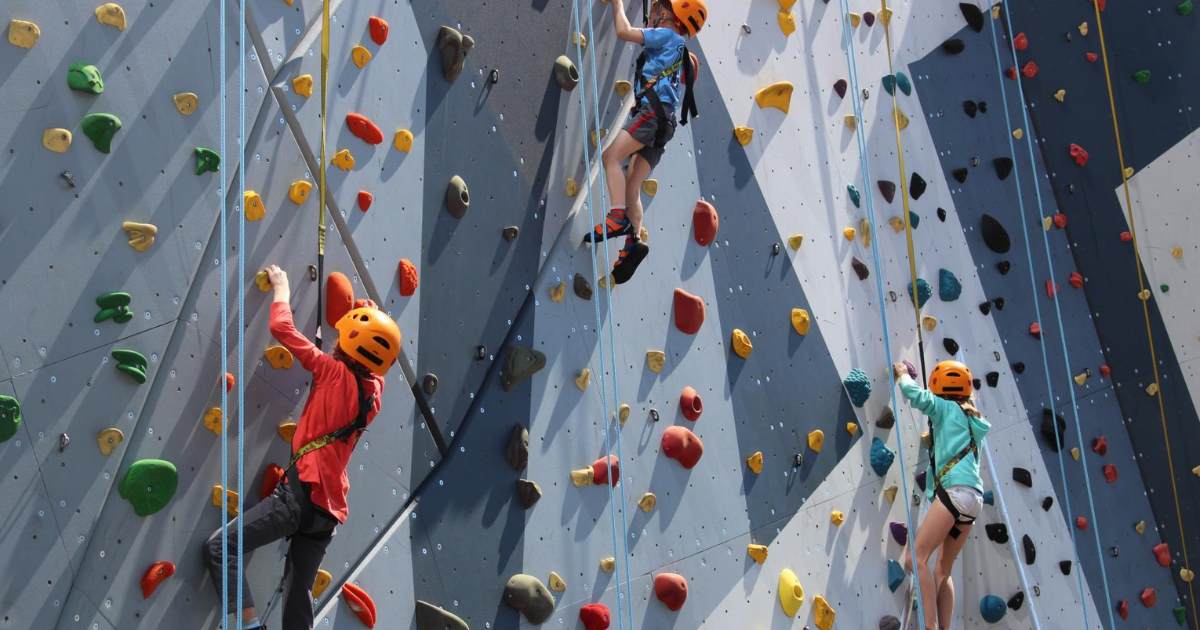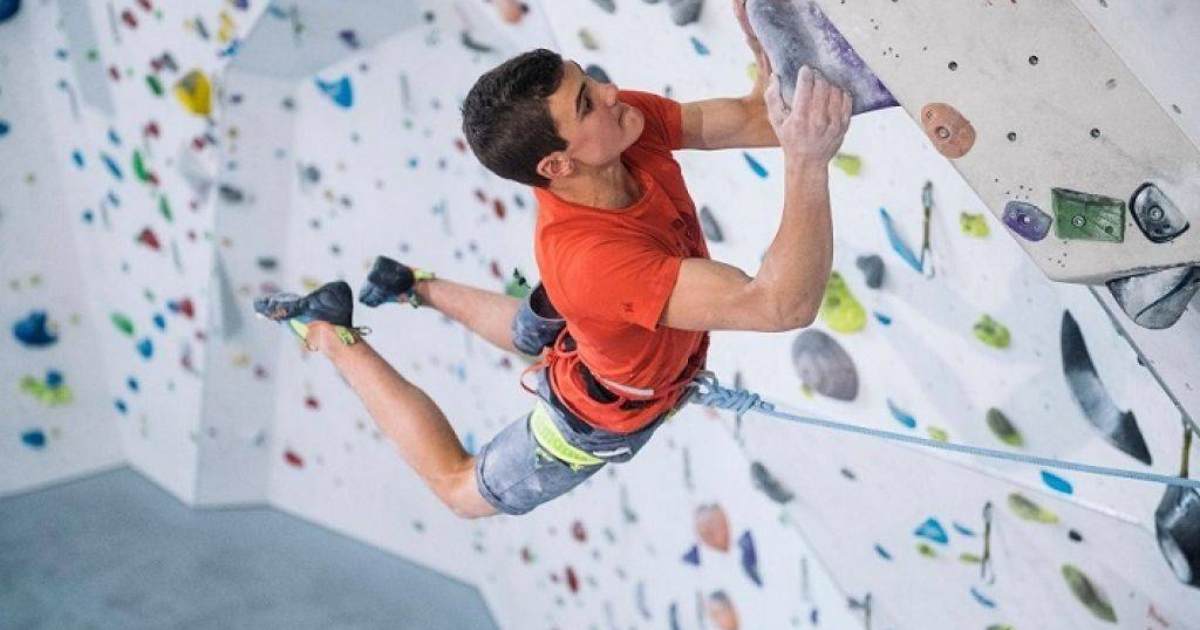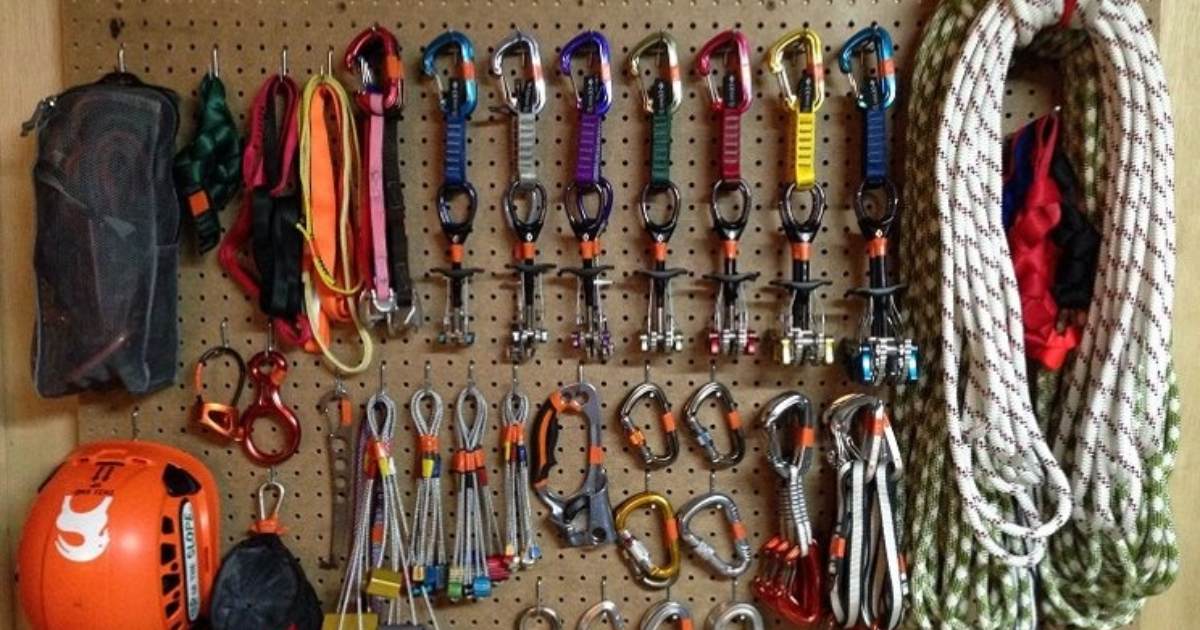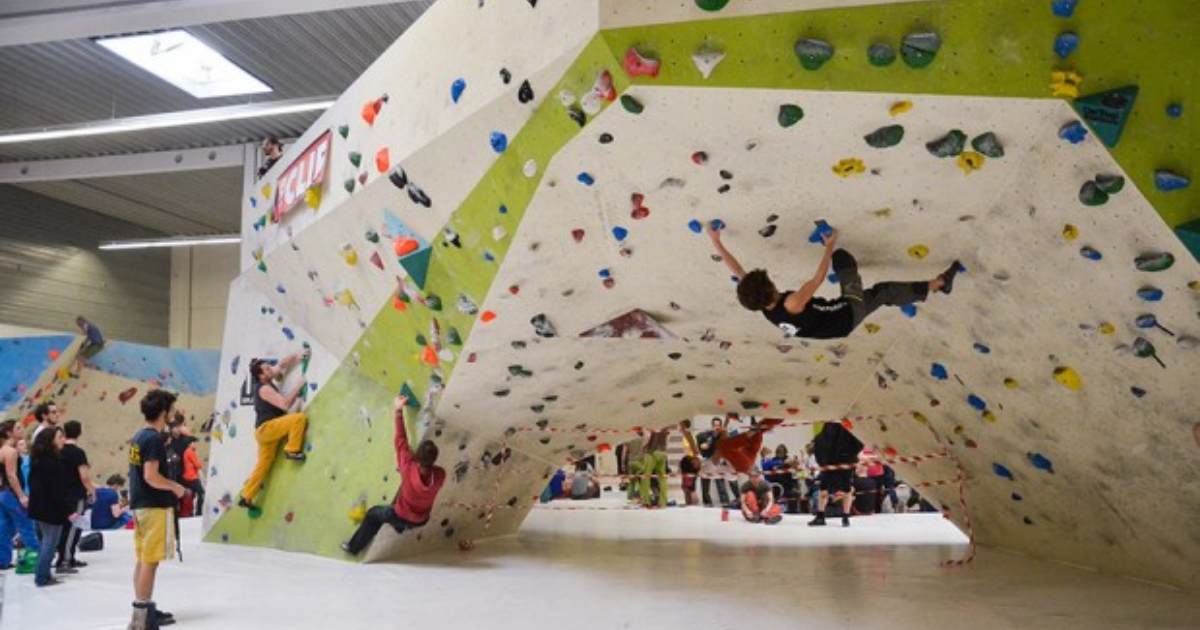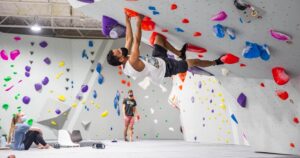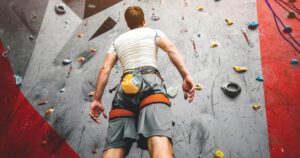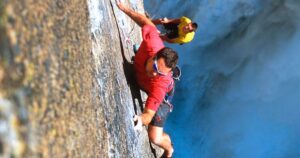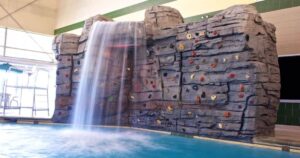Rock climbing gyms have artificial walls and holds for training indoors. They offer routes for all skill levels. Gyms provide a convenient, safe space to learn year-round. “Rock Climbing Gym” popularity has surged recently.
More people are discovering the thrill. Gyms build community and problem-solving skills. They attract adventurous spirits. Rock climbing gyms cater to daredevils and weekend warriors. They offer top-roping, lead climbing, and bouldering options. Skilled instructors teach safety. Gyms provide an ideal environment to scale new heights.
The Rise of Indoor Climbing
In the 1980s, there were only a handful of indoor rock climbing gyms in the United States. But as interest in the sport grew, so did the need for indoor training spaces. According to the Climbing Business Journal, there were only 43 climbing gyms in the U.S. in 1987. By 2017, that number skyrocketed to over 600 and continues to rise.
Several factors have fueled the growth of indoor climbing over the past 30 years:
- Increased visibility and popularity of rock climbing in mainstream media and the Olympics
- Improved gym equipment and route-setting technology
- Growth of competitive indoor climbing
- Desire for full-body workouts and community activities
With indoor walls available, people could train year-round regardless of weather. Gyms also opened up the sport to a wider demographic living far from natural rock formations. Climbing gyms made the sport more convenient and accessible.
Gym Amenities and Features
Modern indoor climbing gyms contain towering walls covered in colored plastic holds. They typically have a variety of wall types:
- Top rope walls up to 45 feet tall for roped climbing
- Lead walls with bolted routes for lead climbing
- Short bouldering walls without ropes
Gyms also have workout areas, locker rooms, pro shops, and lounge space. Some even offer yoga studios, saunas, and childcare services.
The most basic amenity every gym needs is floor padding to cushion falls and equipment drops. They install thick padded carpeting or foam matting under bouldering walls.
For top roping, most gyms have auto-belay systems. These pulley devices catch solo climbers if they fall, eliminating the need for a climbing partner. Belayer certification courses are also common for novice climbers learning to belay.
Climbing Wall Construction
Indoor climbing walls try to mimic the texture and variety of real rock faces. They are usually built with textured fiberglass or plywood panels screwed onto a stud wall.
Wall builders first create a computer 3D model to plan the layout. Walls typically overhang 10 to 30 degrees past vertical to increase difficulty. They also curve and slope to simulate natural rock contours.
Hundreds of plastic resin or polyurethane handholds are bolted onto the walls in artistic patterns called “route sets.” These provide grips for hands and feet while climbing. Holds come in a huge variety of shapes and colors indicating different purposes.
Climbing Difficulty Rating Systems
Indoor climbing gyms rate route difficulty so climbers can select appropriate challenges. There are several common rating systems:
Bouldering
- V-Scale: Rates boulder problems on a scale of V0 (easiest) to V16 (hardest).
Top Rope and Lead Climbing
- Yosemite Decimal System (YDS): The most popular rating system in the U.S. It rates climb difficulty from 5.0 to 5.15.
- French numerical scale: Common in Europe and Canada, it rates climbs from 1 to 9.
- Color coding: Some gyms use colored tags or tape to denote difficulty levels.
Benefits of Indoor Climbing
Rock climbing gyms offer many benefits beyond recreation. Here are some of the top reasons people join gyms:
- Full-body workout: Climbing works all major muscle groups in the arms, back, shoulders, core, and legs.
- Improved flexibility: The dynamic movements increase mobility and range of motion.
- Mental challenge: Climbing requires focus, problem-solving skills, and mental endurance.
- Social atmosphere: Gyms facilitate a sense of community and connection.
- Stress relief and mood boost: The sense of accomplishment releases feel-good endorphins.
- Convenience: Gyms provide year-round training. No travel to outdoor crags required.
With both physical and mental rewards, it’s no wonder indoor climbing gyms have exploded in popularity worldwide. The growth is expected to continue as more people discover the joy and thrill of rock climbing in a gym setting.
The Different Types of Indoor Climbing
Rock climbing gyms accommodate several different climbing disciplines to suit all skill levels and interests. The main types of indoor climbing are:
Top Rope Climbing
This is the most beginner-friendly style of roped climbing. The rope runs from the climber’s harness up to an anchor system at the top of the route. A belayer controls the other end of the rope to catch falls.
In gyms, top rope routes are typically 20-45 feet high on vertical walls. Climbers use fixed bolts or chains to connect their ropes at the top. Top roping allows repeating routes safely since falls are caught by the belayer.
Lead Climbing
For lead climbing, the climber attaches the rope to quickdraws clipped into bolts drilled into the wall as they ascend. A belayer feeds out slack from below.
Falls before clipping all the bolts can be more dangerous. So lead climbing requires more skill, confidence, and safety knowledge. Gyms often require passing a lead climbing test to lead climb without supervision.
Lead walls in gyms range from 30-55 feet tall. Climbers climb a route without previewing it, simulating outdoor lead climbing.
Bouldering
Bouldering involves climbing shorter routes close to the ground without ropes. Thick padded mats cover the floor to cushion falls. Spotters can help guide climbers’ falls as well.
Bouldering traverses along the base of walls focus on lateral movement. The overhanging walls and roofs require dyno movements to complete. Gyms set problems at all levels from beginner VB to expert V10.
Speed Climbing
Speed climbing tests how fast a route can be climbed. Special speed walls have identical side-by-side routes with standardized holds. Climbers race against the clock for the fastest time to the top.
Competitive speed climbing uses 15-meter walls. But gyms can make smaller speed walls for training. Speed climbing evaluates quick footwork, memorization, and efficiency of movement.
Downclimbing
While often overlooked, downclimbing helps build crucial skills. Descending tests climbers’ balance, core tension, and familiarity with foot placements.
Some gyms mandate downclimbing certain boulder problems or top rope walls. Downclimbing segments in lead routes helps practice gear placement as well. Controlled descending improves precision and safety.
Gear and Equipment for Indoor Gyms
While an outdoor rack may contain dozens of pieces, indoor climbing requires minimal gear. Here are the basic items needed for gym climbing:
Shoes
Specialized climbing shoes have tight, sticky rubber soles to grip tiny holds on the wall. Beginners can often rent shoes from the gym to find the right fit before buying. More advanced climbers may own several pairs for different uses.
Chalk Bag
Gym climbers carry a chalk bag filled with gymnastic chalk. Climbers frequently re-chalk their hands for sweat absorption and grip. Some bags attach around the waist, while others clip to a harness.
Harness
A snug harness worn around the pelvis and thighs is crucial for roped climbing. It safely connects the climber to the rope with a belay loop and gear loops. Harnesses come in men’s and women’s models.
Belay Device
Devices like the ATC belay use friction to control the rope for rappelling and belaying. Gyms often provide them, but frequent climbers may buy their own. Staff offer lessons on proper belay device usage.
Climbing Rope
Climbing-specific ropes are required for top roping or lead climbing. They dynamically stretch to absorb force when catching falls. Gyms have ropes available to check out or bring your own. 60m x 10.1mm is a standard indoor rope.
Quickdraws
Quickdraws connect the lead rope to bolt hangers along the route. Buy a starter pack of 10-15 quickdraws for gym lead climbing. Quickdraws should always be clipped with the gates opposed.
Belay Gloves
These fingerless gloves protect belayers’ hands from rope burn when catching falls. Some gyms may require gloves for belaying. Thin gloves still allow dexterity to operate the brake strand.
While indoor gyms provide most of the large gear like ropes and anchors, having your own shoes, harness, belay device, and chalk bag is recommended for frequent climbers. The gym staff can offer guidance on what gear will best suit your climbing goals.
Safety and Etiquette at Indoor Gyms
While climbing gyms provide a more controlled environment than outdoor climbing, accidents can still happen if proper precautions aren’t taken. Follow these rules to keep yourself and others safe.
Check In and Sign Waivers
All climbers must check in at the front desk before climbing. This ensures you are covered by the gym’s insurance and policies. You’ll need to sign a waiver accepting the inherent risks of climbing. Minors must have the waiver signed by a parent or guardian.
Take an Orientation Class
Most gyms offer intro classes teaching gear use, knot tying, belaying, and climbing techniques. Even experienced climbers should take a new gym’s orientation to learn their systems. Refresher courses are useful to brush up on skills as well.
Know Your Limits
Don’t attempt climbs above your current skill level. Stick to beginner walls and top roping until you gain proficiency. Attempting climbs too advanced for your abilities can lead to serious falls.
Always Use Spotters
Have an experienced spotter watch all bouldering attempts. They can help direct falls and minimize injuries. Never climb directly above or below another boulderer.
Lead Belay Certification
You must pass a lead test before lead belaying other climbers. Lead falls are more dangerous, so belayers need proper training on managing the rope dynamically.
Beware of Fall Zones
Stand well clear of all lead and top rope climbers’ fall zones. Never stand directly under someone climbing. Pay attention as lead climbers may pendulum swing in a fall.
Downclimbing
Never jump down from the top of a bouldering wall. Downclimb or ask staff to spot you when descending problems. Jumping is dangerous and can lead to ankle and leg injuries.
Following these safety guidelines helps prevent accidents and make the gym a welcoming place for all. In addition to safety, maintaining etiquette ensures a high quality experience for everyone at the gym. Here are some climbing gym etiquette tips:
- Be patient and take turns on popular routes
- Keep volume down and avoid distracting other climbers
- Brush excess chalk off holds after your attempt
- Avoid climbing directly above or below other boulderers
- Check with other climbers before spraying beta or advice
- Be inclusive and welcoming to climbers of all backgrounds
- Pick up and properly dispose of any trash
- Follow all staff instructions promptly
The social nature of climbing gyms works best when everyone respects each other. These etiquette guidelines help preserve the gyms’ communal atmosphere.
Final Thoughts
Rock climbing gyms are great indoor places to learn climbing. They have different walls for top rope, lead, and bouldering. The walls go high so you need ropes and harnesses for safety. The routes are colored and rated by difficulty so you can challenge yourself.
Climbing at the gym is really fun! You get a full-body workout by pulling yourself up the walls. You use your legs, arms, back, and core. It builds your strength and flexibility. Indoor gyms are open all year for climbing no matter the weather. The staff helps you learn new skills. Gyms create a fun social place to climb with your friends. Going to the rock climbing gym is an awesome experience.

